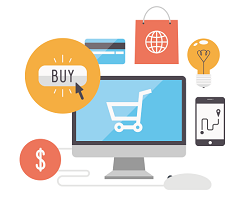2020 Digital Trends
 Hamed Wardak, Entrepreneur
Hamed Wardak, Entrepreneur
Like soup and crackers or love and marriage, KPI (key performance indicators) and customer loyalty go hand in hand. In fact, the two are more critical than ever, especially with a younger demographic that places higher values on transparency and ethical behavior than preceding generations.
Both attributes were cited in the latest Retail Industry Trends report as essential in starting and sustaining long-lasting relationships with customers.
But First
Citing an October 2019 study by eMarketer, that same report said that 2019 retail ecommerce sales were expected to exceed $590 billion, but also cautioned that ecommerce spending may be peaking. It suggested that increased spending rates per buyer would be necessary to sustain double-digit growth in 2020. If that were to happen, the forecast was for ecommerce sales to hit nearly $950 billion in 2023.
Certainly, the potential is there as the percentage of digital buyers in the U.S. was expected to surpass 80% for the first time in 2019. Of note in the report were the number of Amazon Prime members. It said they represented 66% of the digital market which was expected to exceed 122 million by the end of 2019. However, the report also noted that their growth is declining because of market penetration and predicted that it would continue to decrease in the coming years.
Also of note was the report’s forecast that 2019 holiday sales were expected to exceed $1 trillion for the first time ever in spite of a shortened season. There were six fewer days between Thanksgiving and Christmas in 2019 compared to 2018.
Continuing
An important forecast that is also predictive of the future was one suggesting that sales from smartphones and tablets (ecommerce) would grow more than 25% and represent nearly 50% of all holiday ecommerce sales in 2019. Look for ecommerce to increase its sales dominance.
Also keep an eye (and ear) out for smart speakers: 31 million consumers were expected to use them to holiday shop in 2019. The forecast is for 40% of smart speaker users to shop that way by 2021, a total of 38 million customers. That growth will be somewhat hindered as many shoppers like to be able to see their products.
Although smartphones still trail in-store and online purchases, the potential remains great. More and more consumers use their phones to check out merchandise but don’t consummate the deal because they don’t have the store app.
The primary reason cited by consumers for not having the app on their phones is that they already have too many apps, according to a study by Paymnts.com and LISNR published last summer. However, Salesforce had predicted that more than half of holiday orders in 2019 would be made on mobile devices.
What the study also revealed was that nearly 88% of consumers would download a store app if offered special deals or coupons. Almost 80% said they would be motivated by a loyalty or rewards program. Offering both with personalized and tailored conversations and the ability to checkout would not only be super enticing, but also foster ongoing interest and customer loyalty.
Other Tips
Another important takeaway from the eMarketer survey is that messages need to be sent out in the right frequency by brands. The challenge is in determining how often and in which mode. There’s email, cross-channel and push notifications.
Research by Braze, a customer engagement platform, found that most retailers don’t send out enough messages. To maximize push notifications, Braze recommended 2-4 a month. For messaging, they suggested 8-10 monthly, and for emails, the company recommended one a month.
Key to any messages is that they’re relevant and either important or valuable to the receiver. This is where knowing one’s target audience is important. Testing can play a critical role when this isn’t known.
About the Author: Hamed Wardak is an entrepreneur. He recently wrote for Commprobiz here.

